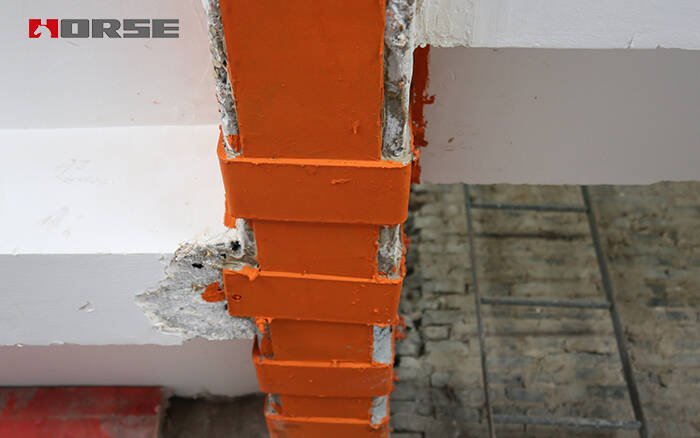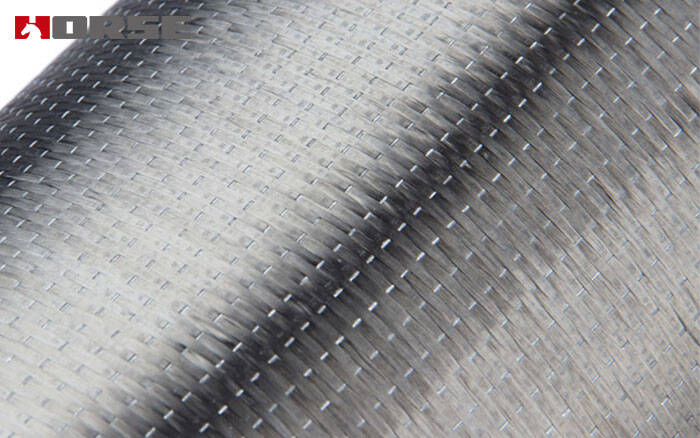Solutions
Horse Construction offers full range of structural strengthening materials with technical supports, documentation supports, products supports, project supports.
What Are The Solutions For Structural Reinforcement Of Concrete Structures?

There are many reasons for strengthening concrete structures: accidental impact or fire, errors in reinforcement design or location, keeping the existing structure consistent or even changing the purpose of the structure.
Depending on the type of structure, the nature of the degradation, the time of intervention or the accessibility of the site, the reinforcement technique may vary. There are six different.
- Shotcrete
Projecting concrete on the structure is the first reinforcement solution. However, this technique has some disadvantages: it is noisy, emits dust, and requires a lot of processing. Not to mention adding thickness and weight to existing structures.
-Additional pre-stress through post-tensioning force
This technique is very suitable for civil engineering. It can be seen that the pre-stressed cables outside the structure are tensioned. Its advantage is that it allows a lot of recovery work.
In buildings, its implementation is much more complicated because it requires heavy equipment and special knowledge.
-Rebar under construction
This involves injecting grout or mortar into the basement, and once it hardens, it will bear the stress of the structure located above. Skilled and durable, the technology is still limited to the basics, requires a lot of product processing, and requires dedicated implementation equipment.
-Metal plate reinforcement
The technique involves gluing and anchoring metal plates to concrete structures. Recovery efforts are important, and the structure is hardly fixed. But metals are prone to corrosion.
-Reinforced by metal profiles
The installation of metal profiles requires on-site handling, personnel and important stages (carving in the existing structure to seal the beam, installing shoes, etc.). Other thicknesses are reported, which may be important, but are not always compatible with forcibly passed templates. Metal profiles are heavy and difficult to handle. And susceptible to corrosion.
-Composite material reinforcement
These reinforcing elements consist of fibers (carbon, glass or aramid fibers) fixed in a matrix (resin). Lightweight reinforced composite materials can be used in multiple sub-series and application areas. Their function is to provide a material with no extra thickness on the existing structure to reinforce it, thereby ensuring better resistance to bending and shearing.

HORSE CONSTRUCTION unidirectional carbon fiber fabric
What are the application areas of reinforced composite materials?
In fact, there are many applications. It ranges from reinforced beams, funnels or openings to column linings. The application of reinforced composite materials can increase bending strength, reduce shearing effect or eliminate buckling.
What are the different types of carbon fiber composite materials? What's the use?
There are several types of carbon fiber reinforced materials, mainly: fabrics, plates and anchor bits. They all have a high modulus of elasticity, making them suitable for withstanding greater mechanical stress.
-Carbon fiber fabric
By definition, carbon fiber is a flexible element that can be coated on the surface to match its shape as closely as possible. It is an ideal solution for wrapping, for example, a cylinder and a beam of light. The fabric needs to use an impregnating primer as a support, and then use a special epoxy glue.
-Carbon plate
As the name suggests, the carbon fiber board has a linear, flat and fairly narrow shape. They are glued to the bottom surface of the beam or floor by epoxy glue. It is also possible to use slats on the upper part of the structure. In this case, the creation of engraving is necessary to integrate and protect the slats so positioned.
You can find anything here you are in need of, have a trust trying on these products, you will find the big difference after that.

High strength, unidirectional carbon fiber wrap pre-saturated to form a carbon fiber reinforced polymer (CFRP) wrap used to strengthen structural concrete elements.

High strength carbon fiber reinforced polymer (CFRP) strip / laminate / plate for structural strengthening and concrete repair

Two-component epoxy modified epoxy structural strengthening adhesive for bonded steel plate to concrete